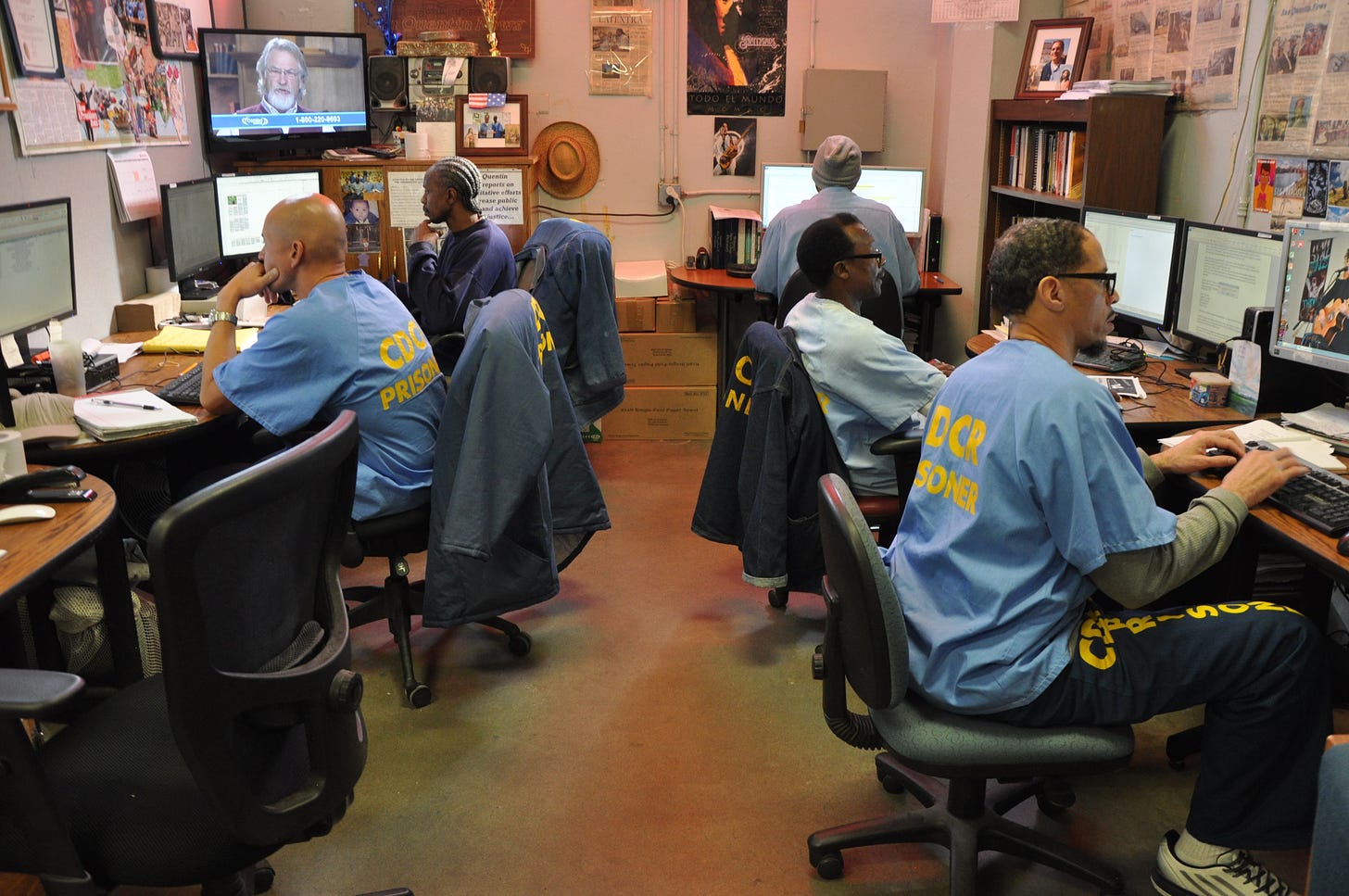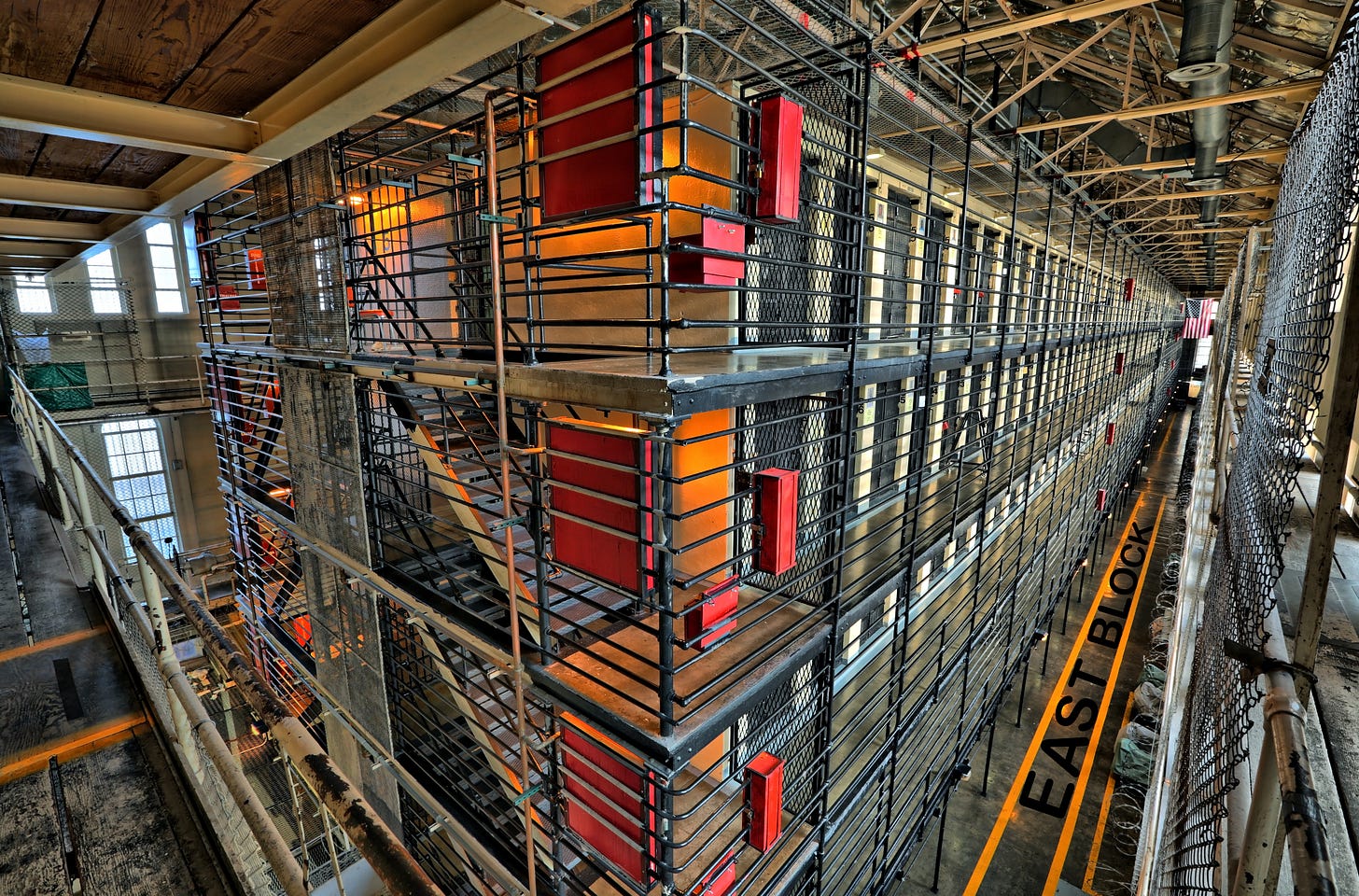On Being Seen, Whatever The Cost.
I asked the inmates at a prison paper about doing a Styles section. I learned a lot.
We all need to express ourselves, to put our mark on the world, whatever the circumstances. It’s so powerful a drive that constraining self-expression can be a kind of punishment.
For several years I taught a monthly course on Feature Writing at The San Quentin News, a newspaper written by incarcerated people. The News is highly regarded, and the SQN staff are members of the Society of Professional Journalists. They took the classes taught by me and others very seriously, with 20-30 people engaging in discussions about generating ideas, reporting, and writing. It could get pretty spirited.
One time I asked what a Styles Section in the SQN might look like. At first the men were confused by the question. Incarcerated people all wear prison-issued clothing, eat the same prison food off the same trays, and spend their time in pretty regimented ways. I’d noticed, though, that every person in the room had consistently worked out their own look, perhaps in the types of shoes they wore (you can have a range of sneaker-type shoes), the way they layered their undershirts and tops, the hats some people habitually wore, and or other details that quickly set people apart.

My point was that details matter in telling a good story. What you notice about how a person is expressing themselves tells you a larger story about who they are. What you use in the final reporting renders the person immediate to readers, and jars their imagination towards empathy and understanding. Even if the things you notice only stay in your notebook, it’s a good way to remember more of the person when you’re putting the story together. And you can almost always find something; even if we’re constrained, we’re all striving to show ourselves.
I pointed out a few things I saw in the room. Hair, beards, shoes. One man told me that the shoes were a big deal. There are companies that sell goods, including sneakers, that people outside the prison can buy for inmates. So sneakers are a point of pride; it shows you have people on the outside who care about you. (The companies also sell things like guitars, religious items, food, and clothing an inmate can wear on leaving prison, but shoes and other permitted clothing are evident in public every day.)
Another person pointed out the way he’d tailored his denims for a better fit. It was part of his dignity that he’d look as good as possible, and his clothing was fit to form.
“It’s contraband, but I don’t care,” he said.
That made no sense. How could prison-issued clothing be contraband? “When I sew it, I change it,” he said. “Technically, it’s no longer being used for the purpose for which it was intended.”
To an outsider, “contraband” signifies drugs, a weapon, or a cell phone. In fact, the men said, it can be anything. Drink a Coke and then fill the can with water, and you’re carrying contraband. That can is no longer being used for its intended purpose, a cola storage and delivery container. Same with a container for instant coffee; they’d had guards who’d stopped people on the way out of the cafeteria and poured out the water they were carrying.
That’s obviously an extreme example, and it doesn’t happen often. At least, not at San Quentin, which has over the past several decades gone from being one of the most notorious prisons in the country to California’s showplace prison for rehabilitation. Most of the inmates want to be there, compared with the other prisons where they’d served time, and most of the guards want to keep things reasonably cool.
Still, the prospect of getting called out is always there, and it butts up against that tension to say something about yourself, if at all possible. Self-expression, as far as you can take it, wins out.
I think that’s one reason why the staff at the San Quentin News (and related work, like the mind-blowing “Earhustle” podcast) is so diligent and professional. An important part of their job is to show people as individuals, in a situation of extreme constraint and conformity. Then they put their own name on the story. Bylines are self-expression for reporters everywhere.
Being seen matters. It’s no coincidence, I think, that many people who have worked on the SQN have been paroled or pardoned since the publication was revived in 2008, and so far their recidivism rate is zero.




